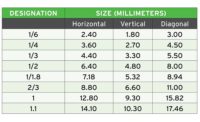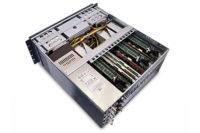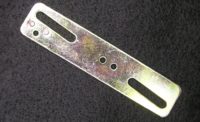You’ve been tasked with integrating a machine vision system. What does integration entail? This article covers the activities you will typically have to handle when integrating a vision system.
Design of a vision system is just part of integrating a vision system. The design part involves selecting the camera, the lens, the light source, the vision processor, the machine vision software package, and the programming of the vision system. In addition to the design of the vision system itself, integration encompasses how the vision system works with its system environment including the operator interfaces, interfaces to other equipment such as a PLC or robot, and mounting the vision system components in place.
Let’s take a common example. A system is needed to perform precision assembly. Parts are presented to the system in a tray where a robot will pick up each part and place it into an assembly. The initial requirement is to use a vision system to locate the part in the tray for the robot to pick it up and also to accurately locate the place where the part should be installed in the assembly. A single camera mounted on the robot appears to be the machine vision solution.
When the design proposes the robot to use a vacuum gripper, it exposes the problem that the part can possibly move in the gripper when picked up. So, another camera looking at the part after pickup is needed to find the part’s precise location in the gripper. Reliability considerations for the system may also indicate that it is desirable to check the location of the part after it is placed. The design also considers the overall timing of the work station: part presentation, robot motion, as well as the vision system time. To achieve the fastest cycle time, a fixed camera over the tray of parts and another fixed camera over the assembly location may dramatically improve the productivity of the workstation.
The robot is likely picked principally on its suitability for the assembly task, its interface to the vision system a secondary concern. It is usually the vision system engineer’s responsibility to ensure the vision system’s interface can be configured to work with the robot controller
Expanding the scope of the work from the design of the vision system exclusively to also include the integration of the vision system with the robot and other system components significantly affects what needs to be accomplished
The integration of a vision system is more than its design.
We’ll model the integration process for a vision system as having six parts: the start, defining the operator interface, defining the interface to other equipment, the design of the vision system for integration, further testing and refinement, often called debugging, and finally deployment.
Start Right
To succeed with vision system integration requires starting right. The primary element is the requirements document, sometimes called the specification. In principle, this document comes from the end user and describes, in detail, what the integrated vision system must do. In practice, the requirements document is often a collaborative effort between the end user and the vision system integrator. Again, in principle, the requirements document does not change during the project. In reality, it often changes due to new information or changes in the end user’s process. This is often called scope creep.
From the requirements document, the integrator develops a system specification that identifies all the components of the integrated system and how they communicate and interact together. The system specification is subject to continuous updating as the system is designed. Component selection and availability affect the details of the specification.
A second requirement to begin the project is an acceptance test procedure. Again, in principle, it is provided by the end user. More commonly, it is also a collaborative effort between the end user and the integrator. The acceptance test is essential to the integration process. It is the standard that tells the integrator, and the end user, when the project is complete.
Designing, integrating, and testing a vision system is impossible without sample parts. The samples should span the range of possible variations and have a quantity that makes testing significantly relevant. There are times when samples are not available – for example, for a new product that is in design and for which parts are not yet available. In those cases, proxy parts are fabricated with the understanding that the system may work with the proxy parts and that differences in the actual parts may cause the vision system to perform below expected levels.
A vision system design, and especially the integration of a vision system, requires many different skill sets. A typical skill set may include optics, mechanical, software, electronics, process engineering, etc. The integrator needs to identify the source of each needed skill. Some will already be with the integrator. A skill that is not present in the integrator’s team can be contracted out to someone who can fill that void.
Integration is a project, and a project needs a plan. Good planning helps the integrator identify where the project’s progress is good and where the progress is at risk. It allows the integrator to keep the end user informed.
Operator Interface
As well as making the necessary functions available, the operator interface must take into account the skill level of different operators: production worker, maintenance technician, process engineer, and factory engineer. It must also take into account the environment in which the vision system will operate. For example, if workers wear gloves, some operations, such as typing would be tedious and should be replaced with other more appropriate controls. The operator interface design can take into consideration the degree to which workers will be trained to operate the equipment. Often, there is very minimal training – often equivalent to a briefing.
Equipment Interfaces
Much to some people’s surprise, the equipment interface can take as much or more effort to implement and test as the machine vision function. Modern interconnection approach replaced discrete signals on discrete wires with networking protocols. Along with networking comes a rich suite of data structures, messages, and responses that all must be tested and debugged.
When a vision system is integrated, some interfaces such as a factory network are not available. Consideration should be given to simulating the network during development since testing and refinement are more efficient at the point of integration than they are on the factory floor.
Design Of The Vision System
The vision system development typically follows a process such as:
- Identify the vision platform: smart camera, PC based vision system, proprietary processor and camera vision system, or embedded vision system.
- Select the software platform if it does not come installed with the vision platform.
- Select the camera, or cameras, to be able to resolve the detail and provide the accuracy necessary.
- Select a lens that matches each camera’s resolution and achieves the needed working distance.
- Test each camera and lens together to ensure adequate resolution is achieved.
- Select the light source, or sources, to bring out contrast in the scene and accommodate mechanical limitations.
- Test the imaging (camera, lens, light) to ensure a quality image. Software may need to be written to substantiate this performance.
- Code the image analysis.
- Develop the interface between the vision system and the interconnected equipment.
- Test to ensure the results are reliable and accurate. This needs to be exhaustive testing.
Although the list makes the process seem linear, that would be a mischaracterization. Except for the first two steps, each subsequent step should be validated with testing and possibly returning to an earlier step for modification.
Test, Refine, And Test Again
Finally, test, refine, and repeat until the integrated system passes the acceptance test. The impact of any refinement is substantially reduced by continuously testing and refining earlier integration process steps where refinements are quicker and less costly.
Deployment
The deployment phase starts with mounting the vision system and its related equipment into place in the end user’s facility. Since this activity often disrupts production, it can be stressful. Careful planning and scheduling along with a plan to run production during the installation if possible is very necessary.
Typically, a final buy-off test is performed to ensure that all the installed equipment is working correctly with the factory’s equipment.
An important part of installation and commissioning is training operators, maintenance staff, and process engineers to insure the whole integrated system delivers maximum value to the end user.
Summary
The integration of a vision system is more than its design. Integration considers not only the vision system but all the other components the vision system must work with or be connected to. Focusing on integration is essential to a successful machine vision system. Continuous testing and refinement during the entire process shortens the time and reduces the cost.



